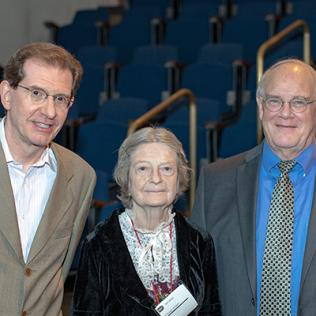
On the Cover
Cells forming bubbles. On the right, two cells (greenish yellow) are in the process of forming bubbles, or plasma membrane vesicles (PMVs). During the blebbing process, a cell’s membrane temporarily disassociates from its underlying cytoskeleton, forming a tiny pouch that, over the course of about 30 minutes, is “inflated” with a mix of proteins and lipids from inside the cell. After the PMVs are fully filled, these bubble-like structures are pinched off and released like those seen in the background.
Chi Zhao, David Busch, Connor Vershel & Jeanne Stachowiak, University of Texas at Austin





